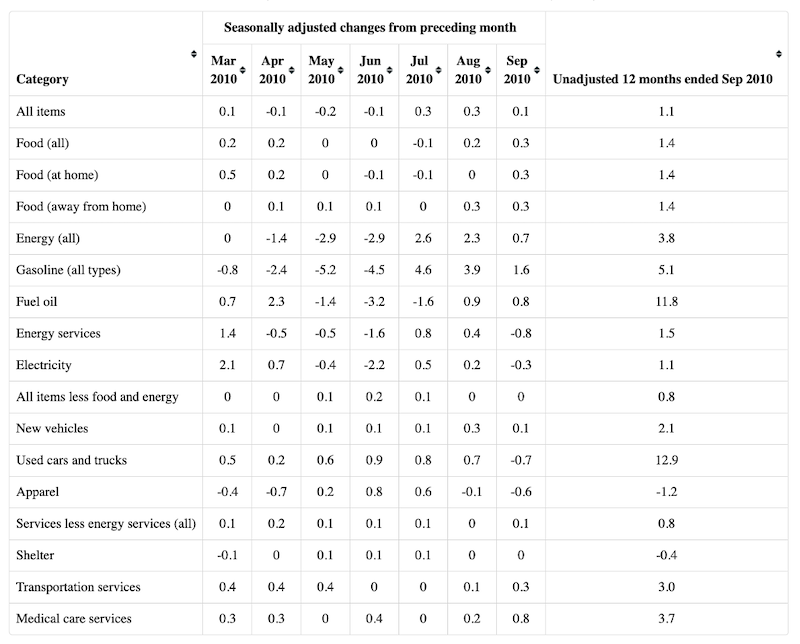题库 / EAOfficialPractice-TA-115
The Consumer Price Index (CPI) measures the average prices of goods and services purchased by consumers. In the United States, the CPI-U calculates the CPI for all urban consumers.
For analyzing general price trends in the economy, seasonally adjusted prices are usually preferred over unadjusted prices because adjusting eliminates the effect of changes that normally occur at the same time and in about the same magnitude every year—such as price movements resulting from climatic conditions, production cycles, model changeovers, and holidays.
Percent Changes in CPI for All Urban Consumers (CPI-U), US City Average

For each of the following, select Yes if the statement is inferable from the given information. Otherwise select No.
| YES | NO | |
|---|---|---|
|
|
|
The changes in seasonally adjusted prices for used cars and trucks between March 2010 and September 2010 were in most cases less in magnitude than the changes in seasonally adjusted prices of new vehicles for the same period.
|
|
|
|
The seasonally adjusted CPI-U for all items was higher in March 2010 than in the previous month.
|
|
|
|
The seasonally unadjusted change in the price of new vehicles in August 2010 over the previous month was about the same as the seasonally unadjusted change in the price of food away from home over the same period.
|
还没有题目讲解(毕出老师会陆续发布对官方考题的解读,请保持关注)。